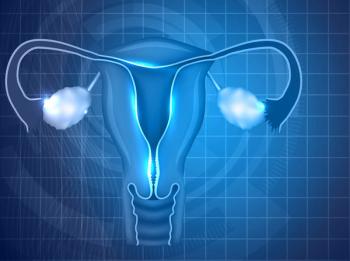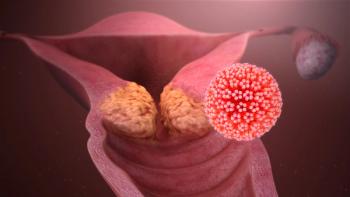
Oncology NEWS International
- Oncology NEWS International Vol 13 No 8
- Volume 13
- Issue 8
Does Cytoprotection Play a Role in Lymphoma Pts Treated With Radiation to the Head and Neck?
The 14 reports in this special supplement discuss theuse of the cytoprotectant amifostine in patients withcancer of the head and neck, esophagus, lung, andcervix, as well as those with lymphoma and acutemyelogenous leukemia. Discussions focus on thepotential of this agent to both reduce radiation sideeffects such as xerostomia and permit doseescalation of chemotherapy and/or radiotherapy.Improvements in treatment outcome and quality oflife as a result of cytoprotection are examined.
BOSTON-Acute and longtermoral complications are welldocumentedin lymphoma patientstreated with irradiation, and olderpatients are particularly susceptibleto xerostomia and dental problems.Andrea K. Ng, MD, MPH, aradiation oncologist at Brighamand Women's Hospital, Boston,and an assistant professor of radi-ation oncology at Harvard MedicalSchool, is leading a randomizedphase II trial to examinewhether the cytoprotective agentamifostine (Ethyol) will reduce radiation-related oral toxicities inlymphoma patients over 40 yearsof age who are treated with radiationto the head and neck. In discussingthe rationale for this ongoingstudy, she noted that sheand her Harvard colleagues areseeking additional collaborators."We find that most youngerpatients recover salivary functionwithin 1 to 2 months after radiationtherapy, but when treatingolder patients we are faced withthe question of either reducing oreliminating doses of radiation,"she said.Quality-of-life measures are animportant part of the study protocol.The investigators are measuringacute toxicities, especially ofthe skin, and late toxicities includingthose affecting the skin, subcutaneoustissues, mucous membranes,and salivary glands. Dr.Ng said that in the absence of cytoprotection,she would expect grade2 or 3 xerostomia in about 60% ofpatients in this age group.Lymphoma Data Lacking
This study is needed, she emphasized,because data on amifostineas a radioprotector for oralcomplications are almost entirelyfrom studies of patients with squamouscell carcinoma of the headand neck."Compared with head and neckcancer patients, lymphoma patientstend to be younger at diagnosis,and they have longer lifeexpectancy,less history of tobaccoor alcohol use, better baseline oralhealth, and a history of exposureto different types of chemotherapyand different radiotherapy fieldsand doses," she said. "The longerlife expectancy makes the questionof long-term quality of lifemore important for these patients."The study is open to patients atleast 40 years of age with histologicallyconfirmed Hodgkin's or non-Hodgkin's lymphoma who as partof treatment will receive radiotherapyto the head and neck region,including Waldeyer's ring, the cervicaland supraclavicular nodalchain, the parotid gland, or the fullmantle field. Patients who havereceived prior radiation to the heador neck are excluded, as are stage IHodgkin's patients receiving radiotherapyalone.Study Protocol
Patients are randomized eitherto amifostine (500 mg in 2.9 mL ofnormal saline, given SC 30 to 60minutes before each radiation frac-fraction)or to radiation as plannedwithout amifostine."An observation arm is includedbecause of the lack of publisheddata formally documenting the rateof occurrence of mucositis andxerostomia in this patient population,"Dr. Ng said. Toxicity will beassessed weekly during treatmentand at 1, 3, 6, 12, 18, and 24 monthspost-treatment. Quality of life willbe assessed by the EORTC [EuropeanOrganization for Researchand Treatment of Cancer]-QLQH&N and EORTC-QLQ-C30 instrumentspretreatment and at 1,3, 6, 12, 18, and 24 months posttreatment.Target accrual is 55 patients perarm, which will provide 83% powerto detect a 33% reduction ingrade 2 or worse xerostomia in theamifostine arm. Eight patients arecurrently on study, four on eacharm.Citing an example of unanticipatedissues that can complicateclinical research, Dr. Ng reportedthat six potentially eligible patientsopted out of the study, three becauseof concern about a potentialtumor-protective effect of amifostine."This possibility was outlinedin the consent form," she said. "Welooked at the form again, and itnow has been rephrased to say thatno tumor-protective effects havebeen seen in other sites. The newlanguage has just been approvedby the IRB [Institutional ReviewBoard]."Maria Werner-Wasik, MD, radiationoncologist and associateprofessor, Kimmel Cancer Center,Jefferson Medical College,Philadelphia, said during the discussionperiod, "I commend theinvestigators for this study. It isgoing to be a major contributionto treatment. I've often wonderedwhy we can't give amifostine tothese patients."
Articles in this issue
over 21 years ago
Benefits of SLN Biopsy Upheld in Large Trialover 21 years ago
Gemcitabine/Taxol: Another New Standard in Metastatic Caover 21 years ago
Statins Cut Colon Ca Risk in Half in Retrospective Studyover 21 years ago
Breast Cancer Regimen Is Dose Dense, Dose IntenseNewsletter
Stay up to date on recent advances in the multidisciplinary approach to cancer.
















































































